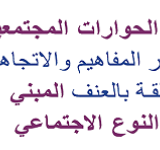Survey of Economic and Social Developments in the Arab Region 2013-2014

This report addresses the widening financing gap for development in the Arab region,both in terms of foreign exchange and government budgets,particularly among energy-importing countries. In chapters I and II,the Survey presents analytical observations on the Arab region’s socioeconomic development situations and prospects in the global context,in the monitoring period from January 213 to June 214. In addition to macroeconomic analysis,both chapters are augmented by analytical observations on social development,concentrating on gender issues,which were enabled by an increasing availability of gender-sensitive data. In chapter III,the Survey discusses the issue of current financing gaps,estimates financing gaps to achieve full employment and concludes with a set of policy recommendations,particularly regarding the potential of regional integration. During the monitoring period of this Survey,the political,security and humanitarian crisis in Iraq,Palestine and the Syrian Arab Republic deepened,impacting neighboring Jordan and Lebanon. Political instability remained in Egypt,Libya,the Sudan and Yemen. The Arab region has increasingly been seen as fragile and chaotic in both socioeconomic and sociopolitical terms,despite its vast energy and natural resource wealth. Yet the Arab region has significant strengths and potential for socioeconomic development and the Survey depicts how each Arab country is coping with uncertainty across the region and progressing along a socioeconomic development path. Moreover,it outlines how regional integration has the greatest potential to unlock financial resource mobilization and diversification,and should be utilized as a tool for economic and social transformation across the Arab region.


